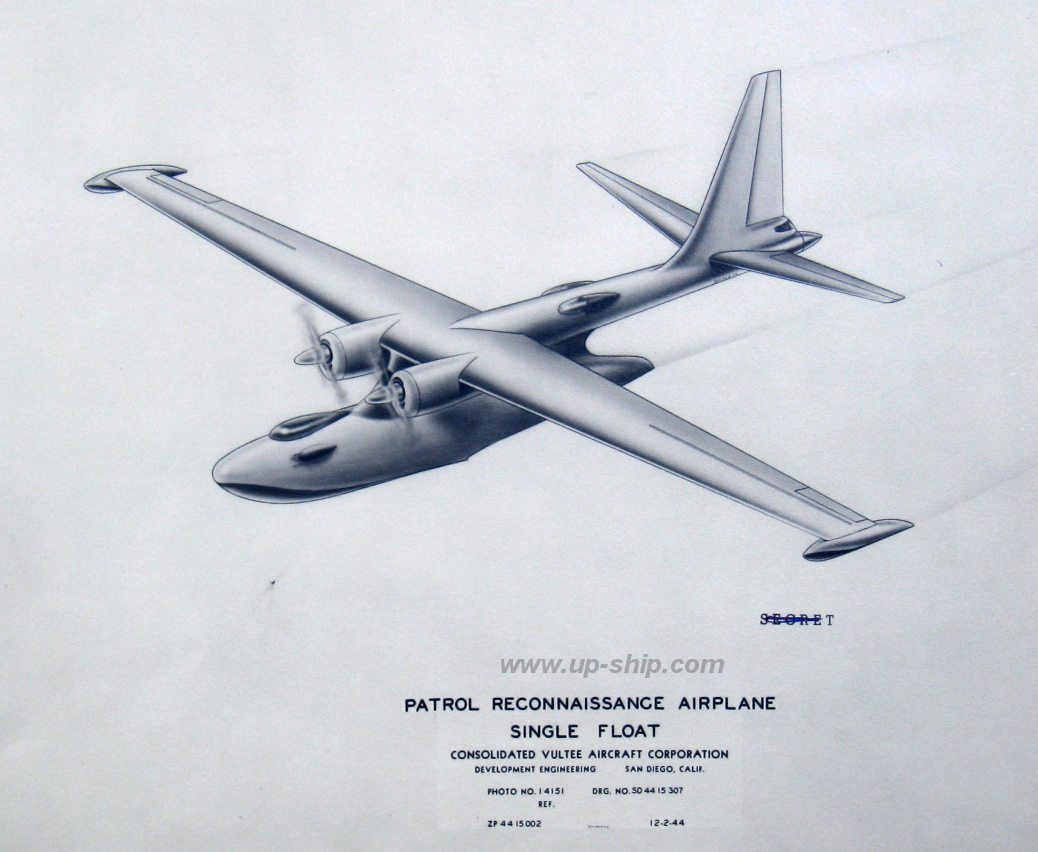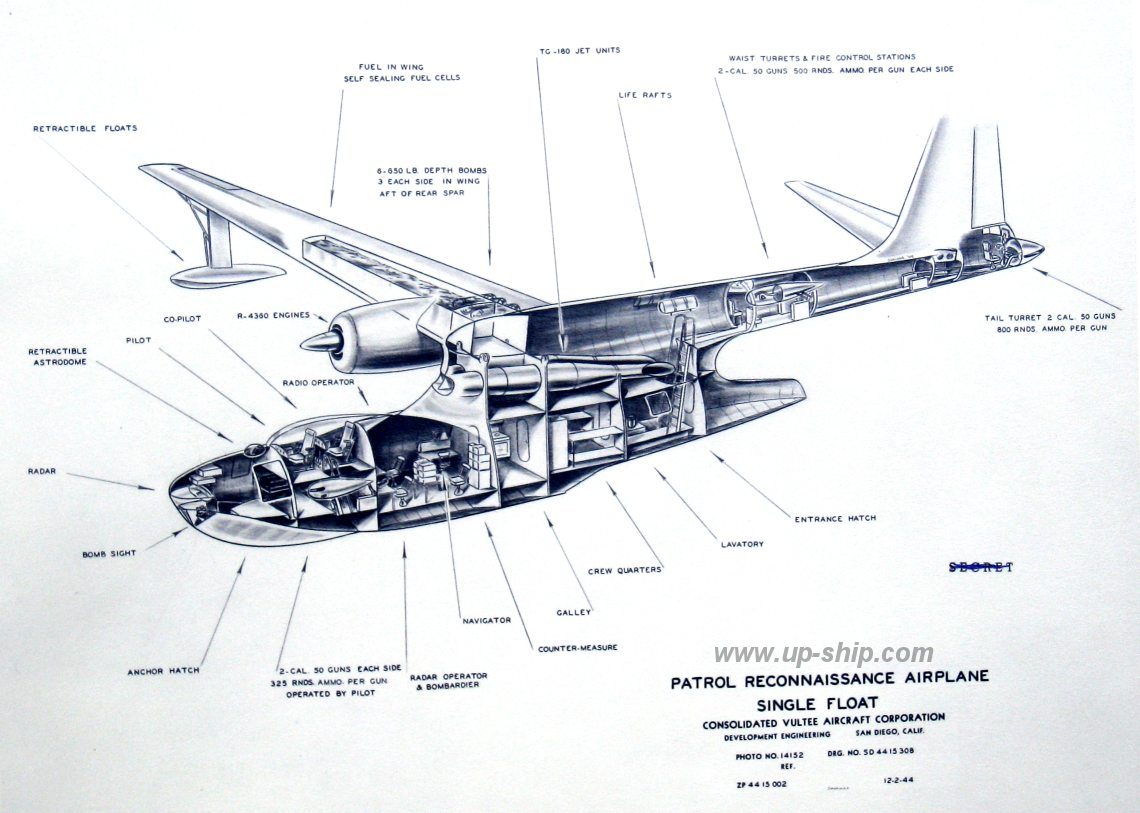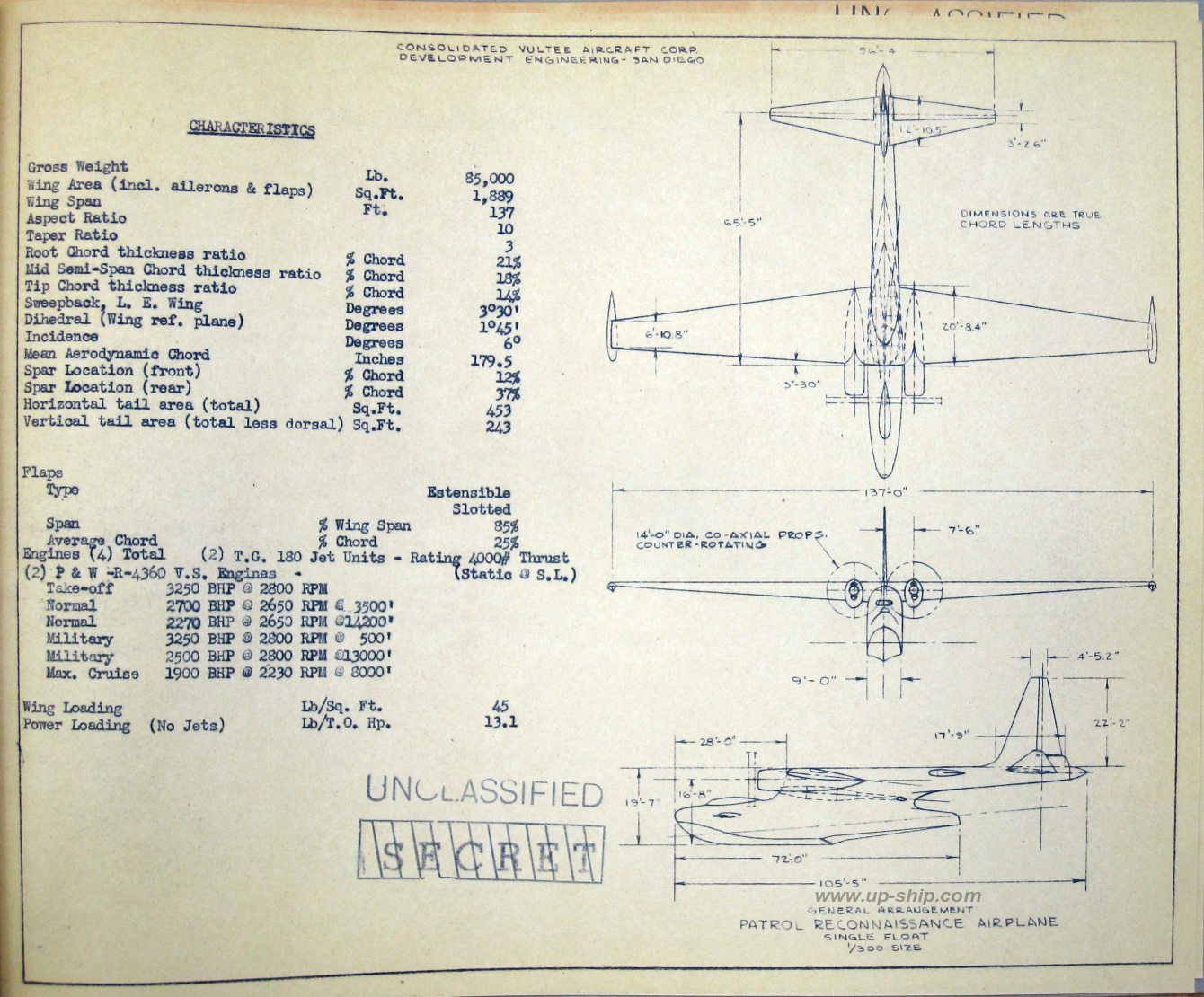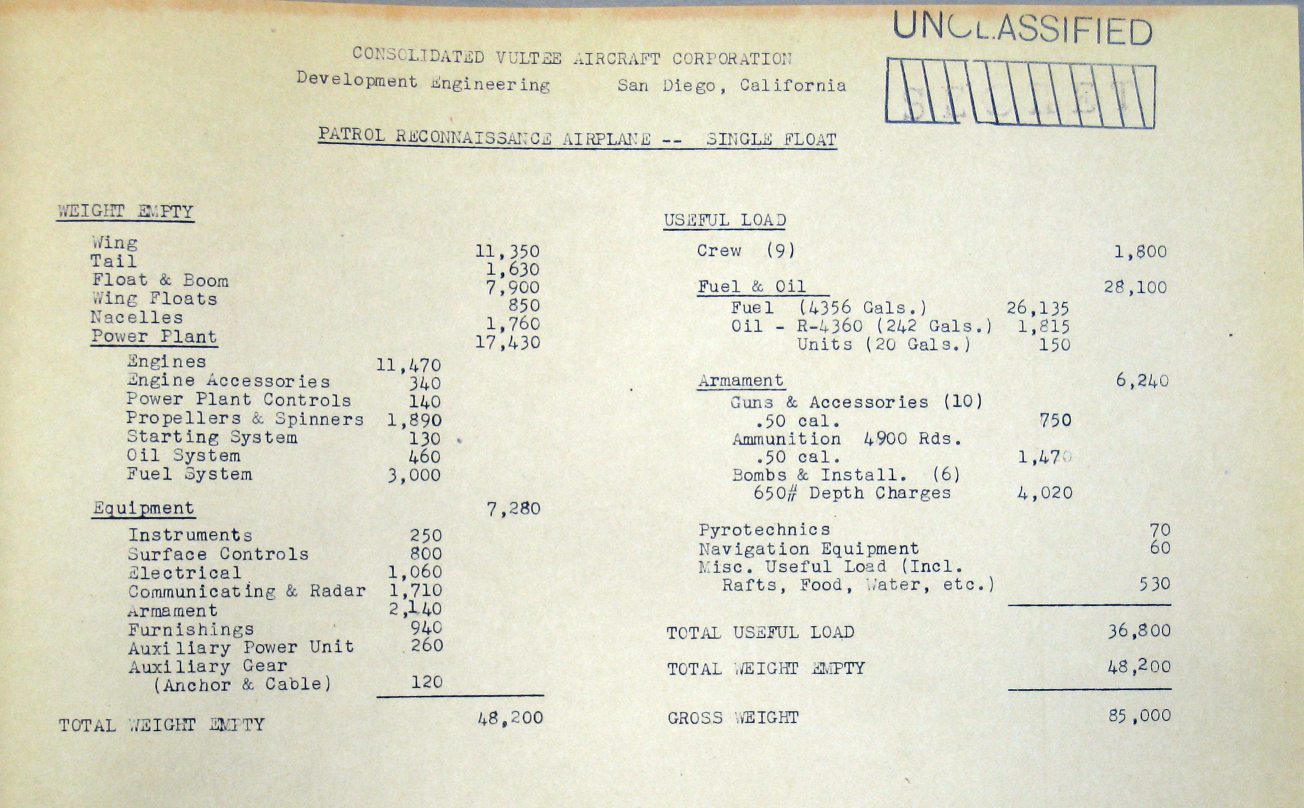Jan 072010
The archives of the San Diego Aerospace Museum has a number of “brochures” of Consolidated Vultee/Convair aircraft projects from well before WWII to just after. Here, for example, is a design for a patrol seaplane/bomber dated 12-2-1944. Note the two jet engines in the wing pylon. This has to be one of the earliest designs for a large jet seaplane.
<>It looks somewhat like a modernised, refined, jet propelled PBY Catalina.

5 Responses to “Patrol Reconnaissance Airplane, Single Float”
Sorry, the comment form is closed at this time.




I never noticed the watermark before.
Interesting – and elegant – design, it would be an interesting paper study to plan it with modern turboprops and see what you could do with it.
Jim
I can definitely see it dragging that tail gun position in the water on a high-powered takeoff.
get it up on the step and haul back on the yoke..and make it really wild ride for your tailgunner!
It looks like a strange cocktail of different things, in principle seems to share some resemblance with German Blomh+Voss projects…
archipeppe wrote:
“It looks like a strange cocktail of different things, in principle seems to share some resemblance with German Blomh+Voss projects…”
There is a touch of the BV-138 “flying shoe” about it, isn’t there?
Although it seems to have a lot of PBY Catalina in the design, it looks nowhere near as tough, and I don’t think I’d trust its structural integrity on landing or taking off in rough seas.
The jet engines seem almost an afterthought, and it looks like it should have four engines rather than the two contraprops it has.
Despite all the attempts to streamline it, it doesn’t look all that fast either, and putting jets on it seems to be a good way to up fuel consumption without upping max speed much. I assume the jets are supposed to be used during take-off or during attacks, and shut down during cruising flight.
There also seems to be a great deal of empty space inside the fuselage for the number of crew it carries, particularly in the tail boom.